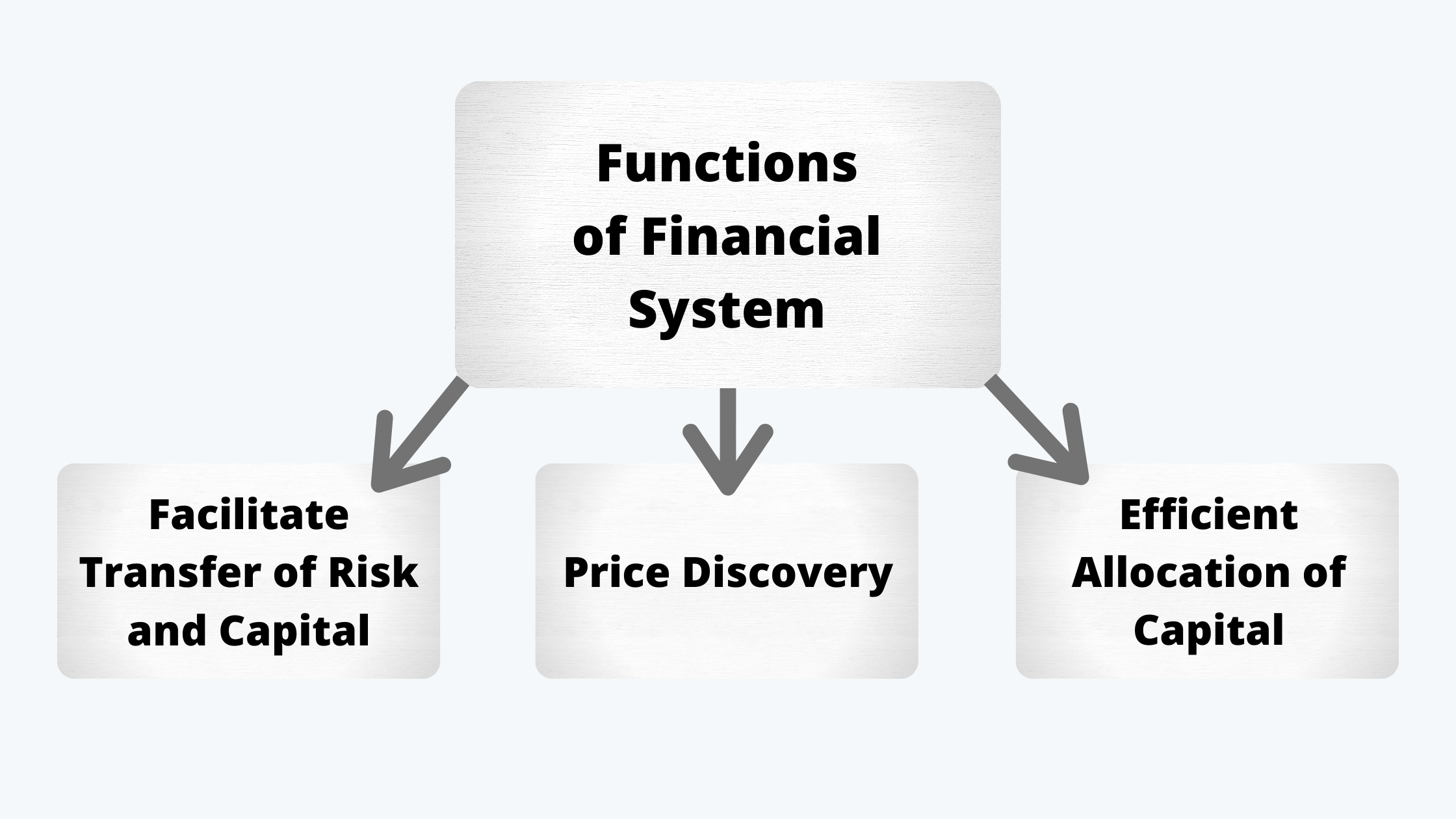A financial system is a system that allows the exchange of capital and funds between lenders, borrowers, and investors. They mainly consist of financial institutions and financial markets that act as a linkage between the investors and the depositors. Some of the main functions of a financial system are:

a. Facilitate the transfer of risk and capital. The financial markets:
i. Facilitate the transfer of capital between the providers (with the excess money at disposal) and the users (those in need of the money) of capital.
ii. Facilitate the transfer of risk between those who don’t want it, to those who are willing to accept it.
The transfer of risk and capital is characterized by the presence of:
i. Savings. It is the income not spent today and deferred for future consumption. For the savings to be channelized, there should be willing parties ready to pay (borrow) for the same. The main sources of savings are individuals, businesses, the government, etc.
ii. Borrowings. Contrary to the savings, borrowings are the money that is expected to be earned today, being utilized today. Borrowings require someone else willing to provide (save) for the borrower today. The sources of borrowings are the same as that of savings, i.e. individuals, businesses, government, etc.
iii. Raising Equity Capital. This is an indirect form of investing, unlike direct lending. This involves providing capital in return for the financial claim on the assets of the company.
iv. Managing Risk. The risks can be managed in the financial market with the help of hedging and insurance techniques.
v. Exchange of Assets. The exchange of assets usually takes place in the spot market.
vi. Information-based Trading. The investors as well as the speculators generally enter into the trade based on the available information. The investors expect to earn the return for bearing risks and the speculators expect to earn a return in excess of the required rate of return.
b. Price Discovery. The financial markets, through the mechanisms of open auctions, helps in the discovery of the price at which the parties are willing to transfer the capital and the risk so that the total investments in the market equals the total savings.
When the supply of capital is greater than the demand for the same, the prices go down. And when the supply is less than the demand, the prices rise. However, when the demand equals the supply, the savings also equal the investments; this is the situation of equilibrium.
One thing that needs to be noticed is that there is no one market with one interest rate. Each market has its own supply and demand dynamics and its own equilibrium.
c. Facilitate efficient allocation of capital. Through the mechanism of price discovery, capital seeks out the best risk-adjusted return.
For all the main functions of the financial markets to function smoothly, there is a need for:
i. Speedy transactions,
ii. Low transaction cost,
iii. Access to information, and
iv. Proper regulations.